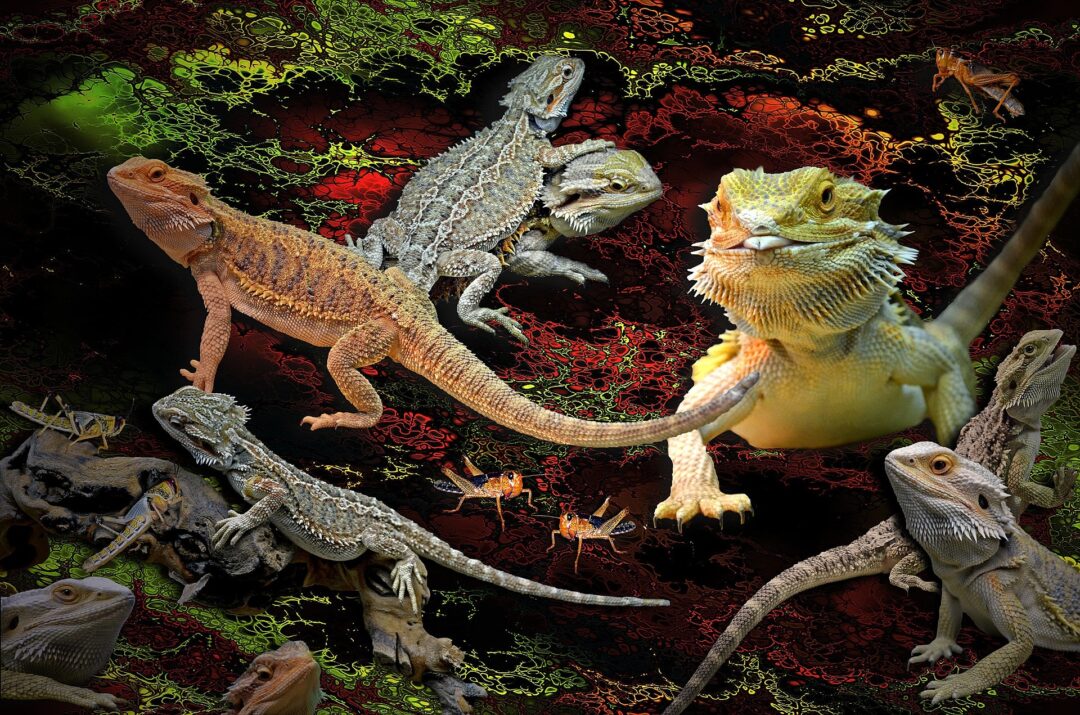Bearded dragons are known for their unique appearance and easy-to-care-for nature. However, many owners ask whether their bearded dragon’s tail will grow back if it is lost or injured.
This article will answer the question: Do Bearded Dragons Tails Grow Back? Or cover everything you need to know about the Bearded dragons tail.
Do Bearded Dragons Tails Grow Back?
The short answer to this question is no; bearded Dragons cannot regenerate their tails once they have been lost.
While some lizard species have the ability to regrow their tails as a defense mechanism, Bearded Dragons are not one of them.
Therefore, handling them carefully and avoiding grabbing their tails is important, as they may become detached and not grow back.
Why can’t bearded dragons regenerate their tails?
The ability to regenerate lost body parts is not common across all species of lizards.
It is a specialized adaptation that has evolved in certain species as a survival mechanism. For instance, some geckos can lose their tails as a distraction or defense mechanism and then quickly regenerate them to full functionality.
In contrast, like many other species of lizards, bearded dragons have not developed the ability to regenerate their tails.
It is thought to be because their defense mechanism involves running away from danger rather than fighting or distracting predators. As such, regenerating a tail may not have been evolutionarily advantageous for them.
Another reason why bearded dragons may be unable to regenerate their tails is due to the complexity of the regenerative process.
Regenerating a tail involves the coordinated growth and differentiation of various cell types, which requires a lot of energy and resources.
It is possible that bearded dragons and related species may not have the necessary genetic machinery or resources to support such a complex regeneration process.
It’s worth noting that while bearded dragons cannot regenerate their tails, they can still survive without them. The tail is an important organ for balance and communication in lizards, but it is not vital for their survival.
If a bearded dragon loses its tail, it can still live a healthy life if given proper care and nutrition.
What should owners do if their bearded dragon’s tail is injured or lost?
If a bearded dragon’s tail is injured or lost, it is important to seek veterinary attention to ensure that it receives the proper care and treatment.
In some cases, a bearded dragon may need medical attention if its tail is bleeding or infected.
Additionally, if the injury is severe enough, the bearded dragon may need pain medication or other forms of treatment to help it cope.
Owners should also monitor their bearded dragon closely for any signs of stress or discomfort and make any necessary adjustments to their care regimen to ensure they are happy and healthy.
FAQs
Do Bearded Dragons Tails Grow Back?
No, unfortunately, bearded dragons cannot regenerate their tails once they have been lost.
How common is it for bearded dragons to lose their tails?
Bearded dragons can lose their tails for various reasons, including stress, injury, or fighting with other bearded dragons. However, it is not very common for them to lose their tails.
Will my bearded dragon’s tail grow back if it’s only partially lost?
No, unfortunately, bearded dragons cannot regrow any part of their tails once they are lost, even if it’s just a partial loss.
Can I prevent my bearded dragon from losing its tail?
You can take steps to prevent your bearded dragon from losing its tail, such as providing a safe and stress-free environment, handling it gently, and avoiding putting it in situations where it could be injured or fight with other dragons.
What are some signs that my bearded dragon may be at risk of losing its tail?
Some signs that your bearded dragon may be at risk of losing its tail include a loss of appetite, lethargy, or other signs of stress or illness.
If you notice any of these symptoms, you should take your dragon to a veterinarian for an examination.
Conclusion
While losing a tail can be a traumatic experience for a bearded dragon, most will adapt fairly quickly. Bearded dragons’ tails do not grow back, so owners should take steps to prevent injury and ensure that their pets receive the best possible care if an injury does occur.
If you are considering adopting a bearded dragon as a pet, it is important to research their unique needs and care requirements to ensure that you can provide them with a safe and comfortable environment.
With proper care and attention, bearded dragons can make wonderful and rewarding pets for reptile lovers of all ages.
Related Articles:
Can Bearded Dragons Eat Seaweed?
Can Bearded Dragons Eat Microgreens?

